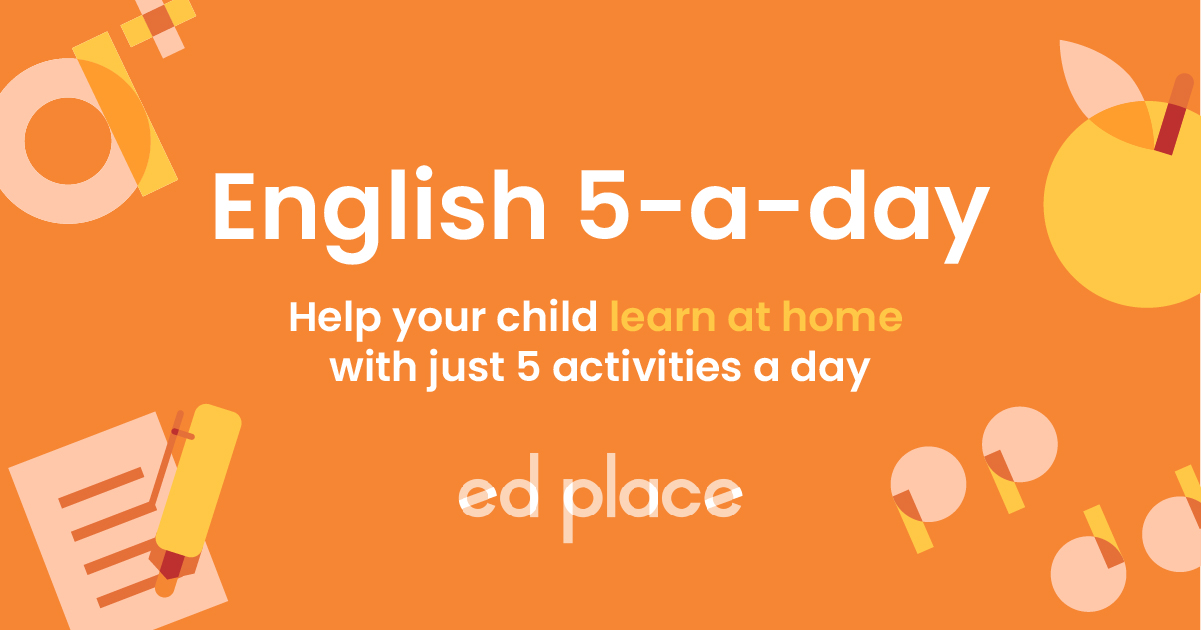
EdPlace's Year 9 Home Learning: Creative Writing
Looking for short lessons to keep your child engaged and learning? Our experienced team of teachers have created English, maths and science lessons for the home, so your child can learn no matter where they are. And, as all activities are self-marked, you really can encourage your child to be an independent learner. Get them started on the lesson below and then jump into our teacher-created activities to practice what they've learnt. We've recommended five to ensure they feel secure in their knowledge - 5-a-day helps keeps the learning loss at bay (or so we think!). Are they keen to start practising straight away? Head to the bottom of the page to find the activities.
Now...onto the lesson!
Harness Your Child's Creative Flow in Writing:
If we think back to our time in school, many of us remember writing stories as one of our fondest memories; especially if left to our own devices! Writing endless pages of action, adventure and escapism, with the ‘cherry on the cake’ being a colourful illustration to match. Although we absolutely want to keep our children’s creative thoughts flowing, we also want to support their ideas and encourage a more structured approach to their writing. Following this step-by-step process your child will be able to:
1) Understand the importance of a well-structured plot.
2) Identify the techniques used to structure a story.
3) Utilise these techniques in the opening to their own piece of writing!
Step 1 - Key Terminology
Before we let those words run free on the page, it’s important to check that your child understands what the key terminology means.
Two of the most common techniques used to create a great piece of writing are an engaging opening and setting.
An engaging opening grabs the reader’s attention with something interesting, unusual or dramatic.
Great setting creates strong imagery and can describe the weather, landscape, buildings, creatures, plants and trees.
Step 2 - Planning the Plot
Before beginning any creative writing, it is important to plan the plot. Your child will probably have a myriad of ideas for what they want to happen and this ensures that their ideas follow a structure, timeline or journey.
Asking the following three questions is a useful way of getting them to plot their ideas into bullet points or even a mind map:
Where is the story going to take place? A planet, country, town or house – anywhere!
When is the story going to take place? Past, present, future.
What is going to happen in the story? They don’t have to stick to this, but they can create an outline which could look something like this:
First…
Then…
Next…
Finally…
Step 3 - Setting the scene
Once your child has organised their ideas into a plot, they can then start to create an engaging opening and setting.
In this passage, Charles Dickens opens with a description of the bustling, vibrant city of London:
The public-houses, with gas-lights burning inside, were already open. By degrees, other shops began to be unclosed, and a few scattered people were met with. Then, came straggling groups of labourers going to their work; then, men and women with fish-baskets on their heads; donkey-carts laden with vegetables; chaise-carts filled with livestock or whole carcasses of meat; milk-women with pails; an unbroken concourse of people trudging out with various supplies to the eastern suburbs of the town.
Look how it sets the scene but also engages the reader with the possibilities of what could happen in a place like this.
Step 4 - Practice makes Perfect
Why not have a go at working out what makes a good story opening? Read these two examples and jot down ideas about each one:
1. The old man sat in his chair. He wasn’t very happy because he was lonely. He had been a soldier once but now he was nothing. He sat in his chair and was sad.
2. Gazing out of the window, tears glistening in his eyes, the old man reflected upon a life well lived. The sun had begun to dip below the horizon, touching the darkening blue here and there with flashes of soft pink and deep scarlet.
Step 5: How About Testing Your Understanding?
Now, we've covered this together why not assign your child the following 5 activities in this order to see how much they've grasped?
All activities are created by teachers and automatically marked. Plus, with an EdPlace subscription, we can automatically progress your child at a level that's right for them. Sending you progress reports along the way so you can track and measure progress, together - brilliant!
Activity 1 - Revise Your Adjectives: Comparatives and Superlatives
Activity 2 - Correct Common Punctuation Errors
Activity 3 - Understand That Words Can Have Positive and Negative Connotations
Activity 4 - Writing to Describe A Special Place
Activity 5 - Writing a Short Story: The Train Station
Answers:
1. This opening has a boring start and does not give information about the setting. It is difficult to imagine what is going on and the opening is not engaging because the story is repetitive.
2. This opening starts with a more unusual sentence. There is much more imagery and description so that the reader can picture the old man and feel a sense of his emotion. The opening is also engaging with the use of the sentence ‘a life well lived’ raising questions as to what this life included. Through the imagery there is also a sense of impending death, the old man having lived his life, which would encourage a reader to become engaged.









